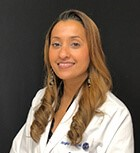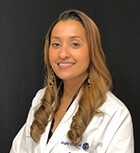[ad_1]

Angie Seelal, RPA-C
Today we have the means to alleviate the distress of unsightly scars and put some finishing touches on the body’s incredible repair system.
WEST ISLIP, N.Y. (PRWEB)
May 13, 2021
Scars are feats of bioengineering. “Our body’s ability to quickly repair its surface and build new tissue following a skin injury is amazing,” notes Angie Seelal, a Certified Registered Physician Assistant specializing in Dermatology with Advanced Dermatology PC. “But the repaired surface, while functional, typically stands out distinctly from the surrounding skin, and the appearance of scars can cause great distress on any individual.”
Whether due to injury, planned surgery, disease, or skin conditions like acne, scars are the result of the body’s power to heal itself, coordinating a complex array of processes, from immune responses to the cellular renovation of a stable, healthy skin surface.
“Scars’ appearance is due to the ‘fast fix’ that our body sets in motion to repair the skin as quickly as possible and ward off infection,” explains Seelal. “The result is that the repaired skin has a less organized framework of collagen, the protein that provides our skin’s underlying structure. In addition, there may be a proliferation of blood vessels. The upshot? Scar tissue looks different from the undamaged skin around it: The scar may be raised or pitted, firmer and even discolored.”
“Especially if a scar is large and prominently placed,” continues Seelal, “its appearance can create a serious psychological and emotional burden. Fortunately, we have effective techniques for addressing scars’ appearance.”
With that in mind, she offers these suggestions:
5 Tips to Improve the Appearance of Scarred Skin:
1. Let lasers light the way: “Lasers offer the means to address two major disruptions caused by scars’ ‘fast fix,’” explains Seelal, “namely, surface unevenness and discoloration. Lasers can trigger our skin’s collagen to ‘re-organize.’ This gives us an effective way to improve the skin’s surface so that the scar tissue blends more evenly with surrounding skin. Laser treatments can also reduce inflammation and blood vessels, lessening the red appearance some scars have. It’s important to work with an expert who has experience with different lasers – such as Erbium, Pixel, and Fraxel – so that the appropriate wavelength is used to achieve the desired outcome.”
2. Get even with chemical peels and fillers: “For scars with a pitted surface, filler injections like Juvederm can level out the skin,” advises Seelal. “Chemical peels can help even out skin tone. Both are useful for resurfacing scarred skin, including skin damaged by acne.”
3. Certain scars are in their own category: “Hypertrophic and keloid scars,” emphasizes Seelal, “are different and require different approaches. Hypertrophic scars are still inflamed, so steroid injections may play a role in reducing inflammation. And keloid scars need special care: They occur when the body’s repair processes misfire and fail to turn off, resulting in an expanding scar. Traditional approaches risk exacerbating keloids, which can respond to cryotherapy and superficial radiotherapy.”
4. Don’t rush to treat: “Especially at first,” acknowledges Seelal, “a scar’s appearance may be alarming. But it’s important not to intervene too quickly, as the body’s own resurfacing process will continue for up to a year, helping to resolve discoloration and an uneven surface. Give your body time to do its best. Then, an intervention can further improve your skin’s appearance.”
5. Practice prevention: “The more we learn about scar formation,” says Seelal, “the better we’re able to intervene in the initial repair to minimize scarring. This plays a role particularly in recovering from surgery, where incisions, sutures and wound dressings can lesson the tension placed on healing skin and reduce the extent of scarring.”
“Today,” concludes Seelal, “we have the means to alleviate the distress of unsightly scars and put some finishing touches on the body’s incredible repair system.”
Bio: Angie Seelal, RPA-C is a Certified Physician Assistant through the National Commission of Certification of Physician Assistants.
Advanced Dermatology P.C. and the Center for Laser and Cosmetic Surgery (New York & New Jersey) is one of the leading dermatology centers in the nation, offering highly experienced physicians in the fields of cosmetic and laser dermatology as well as plastic surgery and state-of-the-art medical technologies. http://www.advanceddermatologypc.com.
Share article on social media or email:
[ad_2]

